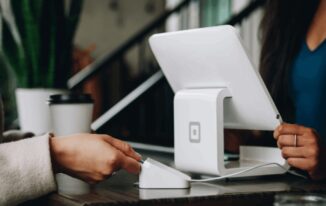In the digital age, more and more musicians are embracing the concept of the home studio. This shift is driven by convenience, affordability, and the desire for creative control. Whether you’re a seasoned professional or an enthusiastic beginner, having a dedicated space for music-making is essential. It not only fosters creativity but also enhances productivity and enjoyment. The heart of many home studios is often a piano, and its placement, along with the overall setup, significantly impacts your playing experience.
Choosing the Right Instrument
The first step in setting up your home studio is selecting the right instrument. A piano is a considerable investment, so it’s crucial to consider your needs, space, and budget carefully. Acoustic pianos offer an unparalleled playing experience with their rich tones and nuanced touch, but they come with higher costs and require regular tuning and maintenance. If space or budget is a concern, digital pianos like the Yamaha CSP 150 provide a practical alternative.
They offer a range of features, including weighted keys for a realistic feel, various instrument sounds, and the ability to connect to headphones for silent practice. Hybrid pianos combine elements of both acoustic and digital instruments, offering a unique playing experience. Regardless of your choice, visit a music store Dublin or elsewhere to test out different models before making a decision.
Pros and Cons of Different Piano Types
| Type | Pros | Cons |
| Acoustic | Rich sound, nuanced touch, authentic playing experience | Expensive, requires regular tuning and maintenance, bulky |
| Digital | Compact, affordable, versatile features, silent practice option | Can lack the authentic feel and sound of an acoustic piano |
| Hybrid | Combines the best of acoustic and digital | Can be expensive, and may not fully satisfy purists of either type |
When deciding on a piano, consider your priorities. If you have the space and budget for it, an acoustic piano might be the ideal choice. However, digital or hybrid pianos offer excellent versatility and convenience, making them a great option for many home studio musicians.
Selecting the Ideal Location
The location of your piano within your home studio is crucial. Natural light is beneficial as it creates a bright and inviting atmosphere, but be mindful of direct sunlight, which can damage acoustic pianos over time. Consider the noise levels in your chosen space. If you live in a noisy area or have family members who might be sensitive to sound, a room away from the main living areas is preferable. Additionally, if you choose an acoustic piano, proper soundproofing is essential to minimize sound leakage.
Music stores often offer consultations and materials for soundproofing, and some even have piano teacher finders who can advise on studio setup. The size of the room also plays a role. A larger room can accommodate a grand piano and provide better acoustics, while a smaller room might be better suited for a digital piano or upright acoustic. Temperature and humidity control is crucial for acoustic pianos, as fluctuations can affect their tuning and overall condition. Aim for a stable environment with moderate humidity levels to keep your instrument in optimal shape.
Ergonomics and Comfort
Creating a comfortable and ergonomic practice space is essential for long hours of playing without strain or injury. Invest in an adjustable piano bench to ensure that your forearms are parallel to the floor when playing. Proper posture is crucial, so sit up straight with your shoulders relaxed and your feet flat on the floor. Good lighting is also important to avoid eye strain. Position your music stand at a comfortable distance and angle, and ensure that the room is well-lit, preferably with natural light or adjustable lamps. Maintain a comfortable temperature in your studio, as extreme temperatures can affect your playing and the instrument itself. Take regular breaks to stretch and move around to prevent muscle fatigue.
Creating an Inspiring Atmosphere
Your home studio should be a space that inspires creativity and motivation. Personalize it with artwork, plants, or other items that resonate with you. Organize your sheet music and resources to keep everything within easy reach. Integrate technology seamlessly into your setup. Use a sturdy music stand to hold your scores, and consider a metronome to help you keep time. If you’re interested in recording your music, invest in a good microphone and audio interface. Don’t be afraid to experiment and try different configurations until you find what works best for you. A piano teacher can offer valuable insights into setting up a practice space that enhances your musical journey.
Maintenance and Care
Maintaining your piano is crucial to ensure its longevity and optimal performance. Acoustic pianos require regular tuning by a professional technician, ideally every six months. Keep your instrument clean by dusting it regularly with a soft cloth, and avoid using harsh chemicals. Protect it from direct sunlight, which can fade the finish and cause damage. For digital pianos like the Yamaha CSP 150, regular cleaning and protection from dust are also essential to maintain its sleek design and functionality. Proper ventilation and humidity control are important for both acoustic and digital instruments. Consider using a humidifier or dehumidifier to maintain ideal humidity levels, especially in regions with extreme climates.
Conclusion
Setting up a home studio for optimal piano playing involves careful consideration of various factors. Choosing the right instrument, selecting the ideal location, prioritizing ergonomics and comfort, creating an inspiring atmosphere, and maintaining your piano are all essential steps in this process. By investing time and effort into designing a well-organized and comfortable practice space, you can enhance your musical experience, improve your skills, and unlock your full creative potential. Remember, your home studio is more than just a room with a piano; it’s a sanctuary for musical expression and growth. So, take the time to personalize it and make it your own. Whether you aspire to become a professional musician or simply enjoy playing for leisure, a well-designed home studio can be a powerful tool in your musical journey.
In conclusion, transforming your home into a haven for music creation is an exciting endeavor. It’s a space where you can freely express yourself, experiment with new ideas, and hone your skills without limitations. By following the tips and suggestions outlined in this article, you can create a home studio that not only nurtures your passion for music but also provides a comfortable and inspiring environment for years to come.
So, take the first step today and start building your dream home studio. With the right instrument, the perfect location, and a touch of personal flair, you’ll be well on your way to creating a space where your musical aspirations can flourish.




